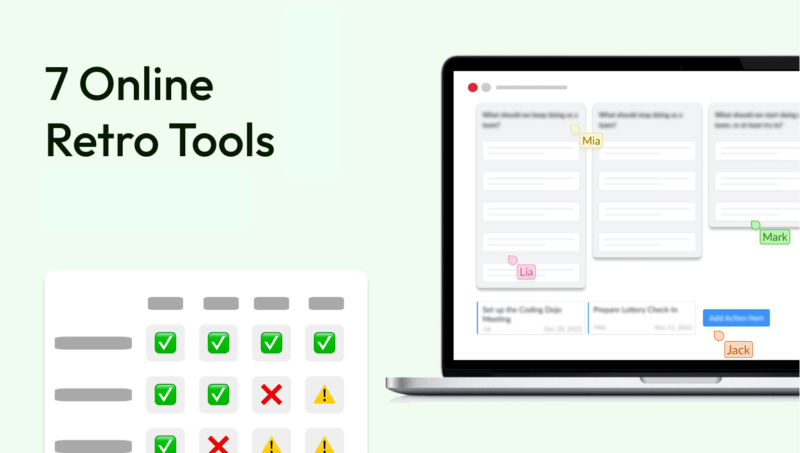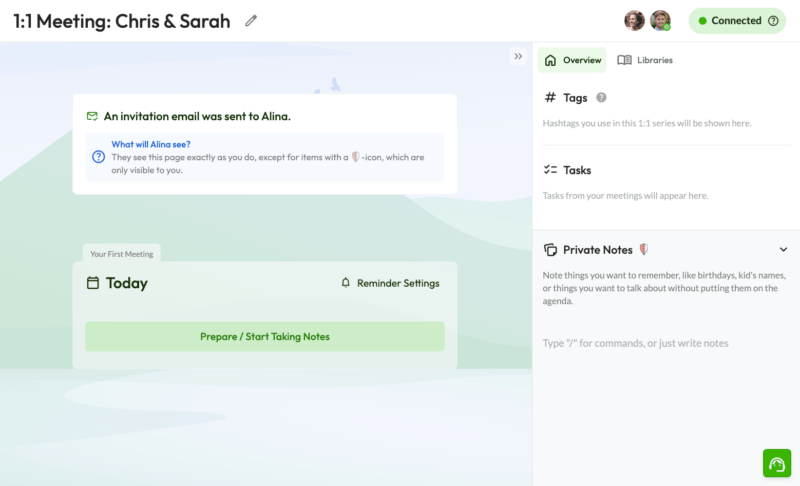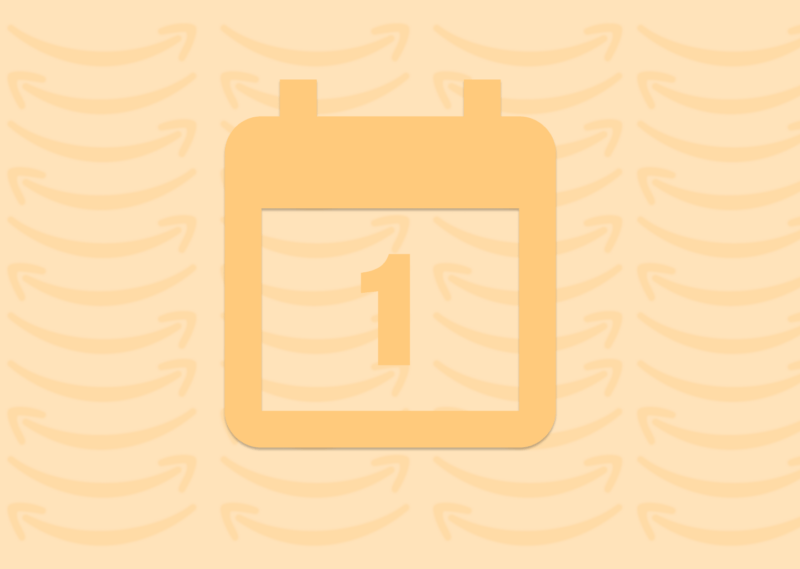In the dynamic world of product development, Scrum Product Owners (PO) face the challenge of juggling complex tasks and roles. From user satisfaction to time to market, various metrics are possible to measure their own success. In this article, we explore the role of the Scrum Product Owner in more detail and use examples to try and get a better feel for what makes a good Product Owner.
We will address the following questions in the text: What does a Product Owner or PO do in Agile? What are the responsibilities of the product owner, where is he or she accountable? What is most important for a Product Owner to understand and what are typical challenges, key skills and metrics of a Product Owner? Let's get started!
Responsibilities and roles of Scrum Product Owner in Agile
Product Owner Business: Responsibilities of the Product Owner
Let's start by defining the Scrum Product Owner role more precisely – when is he allowed to say "this is not my Product Owner business?"
A Product Owner (PO) is a key role in agile product development, especially in the Scrum framework. The main responsibility or business of the Product Owner is to ensure that the developed product meets the needs and requirements of the stakeholders. Here is an overview of typical responsibilities and roles or business of a Scrum Product Owner:
Responsibilities of the product owner: product vision and strategy
- Development and communication of a clear product vision.
- Defining the product strategy and objectives.
Responsibilities of the product owner: Requirements management
- PO is responsible for identifying, prioritizing and managing product requirements.
- Creating and maintaining the product backlog, which presents the requirements in a prioritized order.
Responsibilities of the product owner: Stakeholder communication
- Continuous communication with stakeholders to understand their requirements and ensure that the product meets their expectations.
Responsibilities of the PO: Team communication
- Collaborate with the development team to clarify requirements, answer questions and ensure the team understands the vision of the product.
Agile Development Product Owner Responsibilities: Prioritization
- Determine priorities for development tasks based on customer benefit, business value and other relevant factors.
Product Owner Accountability: Delivery and iteration
- Product Owner is responsible for the timely delivery of increments of the product during the sprints.
- Work with the development team to ensure iterations meet requirements.
Product Owner Accountability: Quality management
- Ensure that the end product meets quality standards.
- Consideration of user-friendliness, performance and other quality aspects.
Agile Development Product Owner Responsibilities: Risk Management
- Identification and management of risks that could affect product delivery.
Product Owner Accountability: Budget responsibility
- Responsible for the budget (possibly together with other roles in addition to the product owner) and the coordination of costs with the business or finance team.
Product Owner Accountability: Feedback processing
- Collecting, analyzing and recording feedback from various sources in order to constantly improve the product.
Product Owner Accountability: Market research
- Monitoring market trends and competition in order to continuously adapt the product and keep it competitive.

Now that we know what roles and responsibilities and what business a Scrum Product Owner or PO has, let's go one step further: What are the typical challenges for a Scrum Product Owner, and what is most important for a Scrum Product Owner to understand against this background?
Responsibilities and roles of Scrum Product Owner in Agile
Scrum Product Owner Challenges
The job or business of the Scrum Product Owner is demanding and involves various challenges. Here are some typical challenges that Product Owners may face:
Product Owner Business: Requirements prioritization
- Setting the right priorities can be difficult, especially when there are many different requirements, often from different stakeholders.
Product Owner Business: Clear communication
- The ability to communicate clear and precise requirements, both within the development team and to stakeholders, requires communication skills.
Product Owner Business: Conflict management
- The occurrence of conflicts between different stakeholders or within the team can be a challenge that a Scrum Product Owner must overcome.
Product Owner Business: Quick adaptation to changes
- In an agile environment, requirements and priorities can change quickly. A Scrum Product Owner must be flexible and able to adapt quickly.
Product Owner Business: Dealing with uncertainty
- Products are often developed in uncertain environments. Dealing with uncertainty regarding market developments, customer requirements or technical challenges requires strategic thinking.
Product Owner Challenges: Team empowerment
- Empowering the development team requires leadership skills and the confidence to delegate tasks and transfer decisions to team members.
Product Owner Challenges: Management of stakeholder expectations
- The expectations of various stakeholders, including customers, managers and the development team, need to be managed and aligned.
Product Owner Challenges: Technical understanding
- A sufficient technical understanding is important to communicate effectively with the development team and understand technical challenges.
Product Owner Challenges: Time management
- Effective management of time and resources is crucial to ensure that product development progresses efficiently.
Product Owner challenges: Resistance to change
- There may be resistance to change within the team or from stakeholders when new approaches or functions are proposed.
Product Owner Challenges: Measurable results
- Establishing and tracking measurable criteria for success can be a challenge, especially when the definition of success is interpreted differently.
Successfully overcoming these challenges requires a combination of skills, including communication, strategic thinking, flexibility and leadership. The learning process and continuous adaptation are also critical to developing an effective Scrum Product Owner or PO – It is not easy to fulfill all these roles of the Product Owner or PO.
If you are reading this article here, you are obviously already eager to learn – that's good. Then the next question will interest you: In light of these challenges, what is most important for a Scrum Product Owner to understand?
Responsibilities and roles of Scrum Product Owner in Agile
Most important for a Scrum Product Owner to understand: Customer centricity
Or to put it another way: What typical mistakes do Scrum Product Owners make who may still have little experience? Which roles of the Scrum Product Owner are perhaps sometimes forgotten?
A key aspect that a Scrum Product Owner must understand and that is often overlooked or incorrectly implemented is the continuous involvement of stakeholders and end users in the development process. This can manifest itself on different levels. Let me give you a few examples, some of which are in other areas but should still be instructive.
Mistake 1: User centricity and continuous feedback:
Most important understanding:
- The needs and perspectives of the users must be the focus of the Scrum Product Owner (PO). A deep understanding of user requirements and expectations forms the basis for successful products.
Roles of the product owner: common mistakes
- Ignoring user feedback or insufficient involvement of end users throughout the product development cycle. Assumptions about user needs without sufficient validation through data or direct feedback.
Solution approach:
- Implementation of regular feedback loops, user tests and user research. Continuous adaptation based on actual user behavior and feedback.
Mistake 2: Lack of prioritization and focus:
Most important understanding:
- Effective prioritization is critical for the Scrum Product Owner to ensure that the development team is working on the features that provide the highest business value.
Roles of the product owner: common mistakes
- Overemphasis on short-term requirements at the expense of long-term strategic goals. Unclear priorities or frequent changes in the priority list that confuse the team.
Solution approach:
- Establish clear criteria for prioritization that are in line with business objectives. Concentration on a few, well thought-out functions instead of being spread across a large number of tasks.
Mistake 3: Communication and transparency:
Most important understanding:
- Effective communication with the team and stakeholders is crucial for a Scrum Product Owner to create a common understanding of the product vision and goals.
Roles of the product owner: common mistakes
- Unclear communication of requirements, leading to misunderstandings and misinterpretations. Lack of transparency regarding progress, challenges and decision-making processes.
Solution approach:
- Clear, precise and regular communication with the team and stakeholders. Use of tools such as roadmaps, backlogs and sprint reviews to ensure transparency.
Mistake 4: Insufficient cooperation within the team:
Most important understanding:
- A strong, collaborative team is critical to the success of a product. The Scrum Product Owner should create a supportive and nurturing environment, typically in collaboration with the Scrum Master or Agile Coach.
Roles of the product owner: common mistakes
- Insufficient collaboration with the development team, which can lead to misunderstandings and inefficient product development. Lack of involvement of the team in decision-making processes.
Solution approach:
- Promoting open and transparent communication within the team. Involving the development team in decision-making processes and taking their perspectives into account.
Mistake 5: Excessive micromanagement tendencies:
Most important understanding:
- A balanced level of control and delegation is crucial. A Scrum Product Owner should empower the team without falling into micromanagement.
Roles of the product owner: common mistakes
- Too detailed control of every task, which can lead to overload and frustration in the team. Lack of trust in the team's abilities.
Solution approach:
- Delegation of tasks to the development team and trust in their abilities. Focus on clarifying goals and expectations instead of getting lost in details.
Mistake 6: Neglecting the long-term strategy:
Most important understanding:
- In addition to short-term goals, it is important to keep an eye on the long-term strategy and development of the product.
Roles of the product owner: common mistakes
- Overemphasis on short-term requirements at the expense of long-term, sustainable product development.
Solution approach:
- Balance between short-term requirements and long-term strategic planning. Regular review of the product strategy with regard to market developments and changing requirements.
Responsibilities and roles of Scrum Product Owner in Agile
Scrum Product Owner Skills: A selection
A successful Scrum Product Owner should have a number of key skills to be effective in their role. Here are some Scrum Product Owner skills:
Product Owner key skill: Customer centricity
- The ability to understand the needs and perspectives of customers and place them at the center of product development.
Product Owner key skill: Communication skills
- Clear and concise communication is crucial to convey requirements, inform stakeholders and interact effectively with the development team.
Product Owner key skill: prioritization skills
- The ability to prioritize requirements based on business value and strategic goals to ensure the team is working on the most important tasks.
Product Owner key skill: Agile Methodological knowledge
- A deep understanding of agile principles and methods, especially in the context of Scrum, to fully utilize the benefits of agile product development.
Product Owner key skill: Technical understanding
- A basic understanding of technical aspects is important to communicate effectively with the development team and understand technical challenges.
Key Product Owner skill: Team empowerment
- The ability to create a supportive environment and empower the development team to perform at their best.
Key Product Owner skill: Strategic thinking
- The ability to develop long-term product strategies and act in accordance with the company's objectives.
Key skill Product Owner: Negotiation skills
- The ability to successfully negotiate with different stakeholders and find compromises when different interests are involved.
Key Product Owner skill: Self-management
- The ability to manage your own workload, set priorities and work efficiently.
Key Product Owner skill: Understanding the market environment
- An awareness of market trends, competition and customer behavior in order to continuously adapt the product to changing requirements.
Key Product Owner skill: Motivation skills
- The ability to motivate the team and create a positive working environment.
Key Product Owner skill: Understanding the business objectives
- A clear understanding of the company's goals and how the product contributes to achieving them.
These skills are crucial to successfully fulfill the complex and dynamic role of the Scrum PO. The combination of these skills enables the PO to strike a balance between the needs of the customer, the goals of the organization and the capabilities of the development team.
If we now put these thoughts together: What then are useful Scrum Product Owner metrics? Which metrics really help a Product Owner?

Responsibilities and roles of Scrum Product Owner in Agile
Scrum Product Owner metrics examples: What helps?
A Scrum Product Owner or PO can use various metrics to track the success of the product, measure customer value and make data-driven decisions. Here are some metrics that a Scrum Product Owner might use, along with examples of goals (some using the SMART criteria)
One thing should be sent in advance for the examples: Of course, the goals can be set in collaboration with other roles such as the Scrum Master or Agile Coach or the Product Manager and do not have to lie solely with the Scrum Product Owner:
-
User satisfaction
- Scrum Product Owner Metrics: Surveys, ratings or NPS (Net Promoter Score).
- Scrum Product Owner Target: Achieve a user satisfaction rate of at least 85% by the end of Q2 to ensure that the product meets user expectations.
-
User engagement:
- Scrum Product Owner Metrics: Active users, session duration, user interactions.
- Scrum Product Owner Target: Increase weekly active users by 15% to drive user engagement.
-
Implementation time for new functions:
- Scrum Product Owner Metrics: Time from the idea to the implementation of new functions.
- Scrum Product Owner Target: Reduction in implementation time by 20% in order to be able to react more quickly to market requirements.
-
Error rate:
- Scrum Product Owner Metrics: Number of faults or failures per usage unit.
- Scrum Product Owner Target: Reduction of the error rate by 10% to improve product stability.
-
Conversion rate:
- Scrum Product Owner Metrics: Percentage of visitors who perform a desired action.
- Scrum Product Owner Target: Increase conversion rate by 5% to evaluate the effectiveness of marketing or product changes.
-
Retention rate:
- Scrum Product Owner Metrics: Percentage of users who remain active over a certain period of time.
- Scrum Product Owner Target: Increase retention rate by 8% to promote long-term customer loyalty.
-
Return on investment (ROI):
- Scrum Product Owner Metrics: Ratio of the profit or benefit to the resources invested.
- Scrum Product Owner Target: Achieve an ROI of at least 15% for product development to ensure that the investments are profitable.
-
Time to market:
- Scrum Product Owner Metric: Time from product idea to market launch.
- Target: Reduce time to market by 25% to be more competitive and respond faster to market demands.
-
Usage data analysis:
- Scrum Product Owner Metrics: Analysis of usage patterns, feature adoption and user journeys.
- Scrum Product Owner Target: Identification of key trends and optimization of functions based on user behavior.
-
Customer Lifetime Value (CLV):
- Scrum Product Owner Metrics: Total value of a customer over the entire customer relationship.
- Scrum Product Owner Target: Increase CLV by 10% to maximize the long-term value of the customer base.
-
Feedback cycle time:
- Metrics: Time needed to take customer feedback on board and integrate it into product development.
- Scrum Product Owner Target: Reduction of the feedback cycle time to a maximum of two weeks in order to respond more quickly to customer needs.
-
Team satisfaction:
- Scrum Product Owner Metrics: Satisfaction of the team, measured by Health Check surveys (possibly in cooperation with the Scrum Master or Agile Coach)
- Scrum Product Owner Target: Increase team satisfaction by 20% by the end of Q2 to reduce sick days
The question "Which metrics help a product owner?" should therefore be answered here. The selection of metrics and the definition of goals should aim to improve the overall performance of the product and ensure that product development meets the expectations of users and the strategic goals of the company.
Responsibilities and roles of Scrum Product Owner in Agile
Support the Scrum Product Owner
Some teams have a Scrum Master or Agile Coach, others unfortunately do not. In both situations, the Echometer tool is helpful. Like a digital coach, it helps with the topic of "continuous improvement" and ensures that the team ultimately delivers better and more punctually.
Echometer is a digital tool that helps agile team leads with agile retrospectives and team Health Checks. Whether remote, hybrid or on-site: it makes team coaching measurable and professionalizes your work while saving you a lot of work. Just take a look at our website to find out more: www.echometerapp.com.
"The Product Owner benefits immensely from a good Scrum Master - ultimately through faster delivery times and more satisfied stakeholders."
Christian Heidemeyer, Psychologist & Scrum Master
Responsibilities and roles of Scrum Product Owner in Agile
Conclusion - Roles of the Scrum Product Owner
So, what is the product owner responsible for? The Product Owner is responsible for various things, as reflected in the last metrics mentioned. The correct selection and interpretation of priorities and metrics are key aspects for a successful Scrum Product Owner. They show the responsibilities and roles of a Scrum Product Owner – and making them transparent on a regular basis helps to keep an eye on the team's central goals.
Finally, another quick hint: If you would like to know how it feels to develop your team with our tool: You can start an agile retrospective below without logging in, in this case the "Keep, Stop, Start" workshop.
Alternatively, simply forward our website to the responsible colleagues: www.echometerapp.com.







